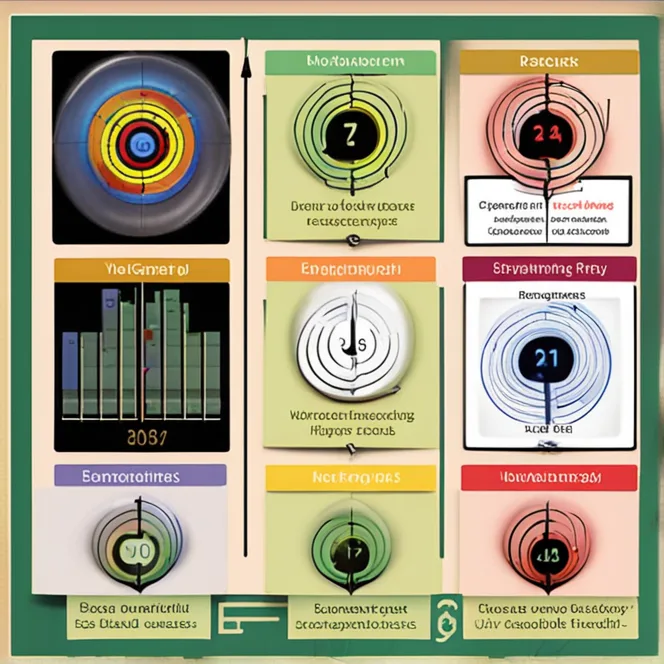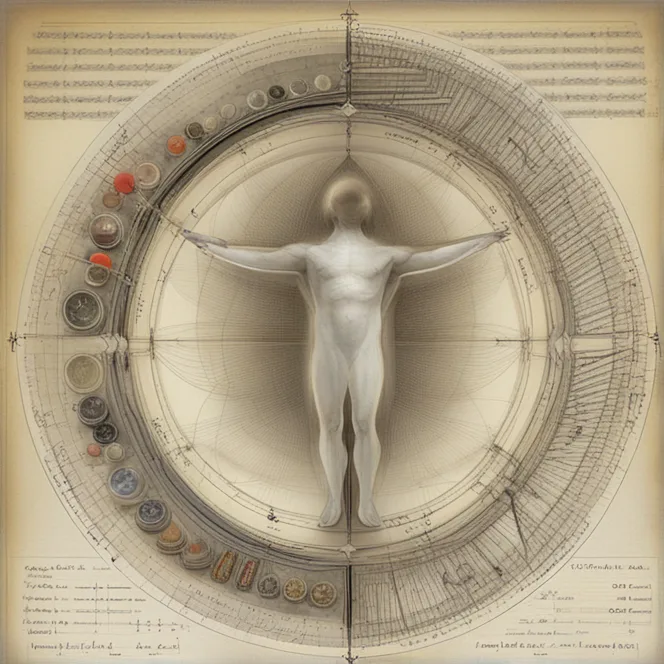
Unlocking The Secrets Of Biorhythm Cycles
Explore the intriguing world of biorhythm cycles and discover how they can potentially influence your everyday life.
article by Adrian Wallace
Biorhythms are a fascinating concept believed to affect physical, emotional, and intellectual aspects of our daily lives. The theory of biorhythms posits that from the moment of birth, we run on three primary cycles: a 23-day physical cycle, a 28-day emotional cycle, and a 33-day intellectual cycle. These cycles are thought to influence our performance, behavior, and overall well-being. The idea emerged in the late 19th century but gained popularity in the 1970s, intertwining with aspects of astrology and numerology to offer personalized insights.

Physical Cycle Explained
The 23-day physical cycle is meant to signify our vitality, strength, and overall health. At the cycle's peak, which occurs just mid-way through the 23 days, one's physical capabilities are said to be at their best. Conversely, during the low phase of this cycle, individuals may feel weaker and less coordinated. While science does not fully support these claims, enthusiasts suggest aligning strenuous physical activities with the high points for optimal performance.
Emotional Cycle Insights
Next is the 28-day emotional cycle, closely resembling the lunar month, which governs emotions, feelings, mood, and creativity. The peak of this cycle is often associated with high emotional stability and positivity. In contrast, during the trough, individuals might experience emotional instability or mood swings. Awareness of one's emotional biorhythm could potentially aid in managing interpersonal relationships and emotional health.

Intellectual Cycle Dynamics
The intellectual cycle, lasting for 33 days, is said to influence cognitive functions such as analysis, logical thinking, and memory. When the cycle is at its high, mental sharpness is purportedly at its peak, making it an opportune time for problem-solving tasks or learning new skills. The lower phase might be less ideal for making significant decisions or engaging in intellectually demanding activities.
Interpreting Biorhythms
To harness the potential benefits of biorhythms, one must first calculate personal cycles based on their date of birth. Various online tools and charts enable this by graphically representing the highs and lows of each cycle. Interpreting these charts can be a bit daunting; therefore, consulting with a biorhythm specialist or utilizing guided software can provide more tailored guidance and insights.

Biorhythms in Everyday Life
Even though biorhythms are not scientifically proven, many adherents integrate them into their daily planning. Optimizing business decisions, athletic training schedules, or personal projects around these cycles can be appealing to those who believe in their influence. Nevertheless, it is important to approach biorhythms as a complementary practice rather than a definitive guide, keeping in mind the subjective nature of its application.
Critical Reception and Debate
The scientific community remains skeptical of biorhythms, often labeling the theory as a pseudoscience due to the lack of empirical evidence supporting its claims. Critics argue that any perceived accuracy of biorhythms is due to the placebo effect or confirmation bias. Despite this, the fascination with biorhythms endures, reflecting a human tendency to find patterns and seek control over life's unpredictabilities.
Published: 12/8/2023
Modified: 12/8/2023
More predictions
Come back here soon to learn more about yourself and your future


Biorhythms: Your Body’s Natural Cycles
Explore the fascinating world of biorhythms to understand your body's natural rhythms in energy, emotions, and intellect.


The Power Of Biorhythms Calculator
Unravel the mystery of your personal biorhythms with our insightful calculator and discover how they influence your daily life and future decisions.


Biorhythms: Unlocking the Code of Biological Rhythms
Explore the fascinating world of biorhythms and how they influence our physical, emotional, and intellectual states throughout life.